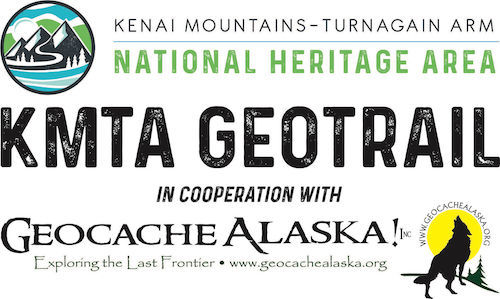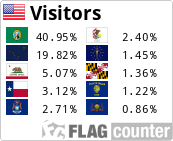About the KMTA GeoTrail:
Welcome to a geocaching trail exploring Alaska’s only National Heritage Area. In 2009, Congress designated the Kenai Mountains-Turnagain Arm (KMTA) region of Southcentral Alaska as a National Heritage Area (NHA). This designation formally recognizes the history of an area that has deeply shaped the legacy of Alaska and the nation. It is the history of the Alutiiq, Sugpiaq, and Dena’ina people—the original stewards and inhabitants of the Kenai Peninsula. It’s that of the Iditarod National Historic Trail, Alaska Railroad, Gold Rush, Seward Highway, and local industries that give KMTA its character. KMTA’s geographic footprint bridges Cook Inlet and Prince William Sound via mountains, glacial valleys, and productive rivers. Throughout this landscape are communities and stories that connect us to our past and future. It includes the small and vibrant communities of Bird, Indian, Girdwood, Whittier, Hope, Cooper Landing, Moose Pass, and Seward, and all the wilderness between them. As Alaska’s only National Heritage Area, KMTA aims to enhance, preserve, and share the region’s natural and cultural resources— in essence its heritage. Above all else, KMTA strives to foster pride of place and an enduring stewardship ethic for this special place. As you travel through the Heritage Area to complete this GeoTrail, we encourage to keep that stewardship ethic front of mind as you learn about and enjoy the richness of the region.
As you search for the geocaches making up this GeoTrail, you’ll be asked to complete a passport that qualifies you to purchase the KMTA GeoTrail Geocoin. For more information on the Passport and GeoTrail, please visit KMTA-GeoTrail.GCAK.org
KMTA field guide link: https://kmtacorridor.org/field-trip-guide/
The unique code word for this cache is found on the front of the logbook and/or on the inside of the container lid.
**Cell coverage warning: this location may have limited cell phone coverage (at least for data). It would be wise to download the cache information before arriving at GZ.**
KMTA GeoTrail #16: Upper Trail Lake - Convergence of Corridors
View Where Sutures Within the Chugach Terrane Create Transportation Routes at Moose Pass
This spot provides an ideal overview to emphasize the connection between geology and transportation corridors. At this site one can see the convergence of two wide valleys —zones of crustal weakness created when the Chugach Terrane was assembled. Stand on the shore of the lake, taking in the view of the valleys leading to the south (Highway and Alaska Railroad route toward Seward), to the West (the Highway Route), and to the North (the Alaska Railroad and Johnson Pass Trail). Upper Trail Lake is the result of the assemblage of crustal packages which ultimately became the Chugach Terrane, to be transported north by plate tectonics. Even the shape of Trail Lake points like 3 arrows aimed down these wide valleys. You’ve come to the geologic essence of the Kenai Mountains-Turnagain Arm National Heritage Areas!

Looking north from the parking area across Upper Trail Lake...
But alas . . . the story. This is not just a story of geology. It is a story of how geology has affected human activity. Not only did the action of plate tectonic shove rock laced with ore-bearing veins into place; this same action provided the corridors for which to get to those ore deposits. It is these same transportation routes that have been exploited across time to this day. At this point here the railroad and the highway diverge. The railroad travels the corridor to the north while the highway trends westward before heading northward. They will stay separated for about 45 miles until they rejoin at Portage. This in itself truly illustrates the connection between geology and human activity within the eastern Kenai. But perhaps a more compelling question is this: Why does the railroad and roadway diverge from the same route? It is the norm for railroads and roadways to parallel each other. Services don’t need to be duplicated and supply/construction of each can be complementary to the other. Why, in Alaska, does the railroad snake off in its own separate journey? This is a compelling story that is worth chewing over. To help provide some discussion points the map below (spanning the KMTA landscape) shows when certain “routes” were finished. Ponder the dates, consider what was occurring here across time and the landscape, and draw your conclusions as to why the railroad and the highway diverge at this point.


This cache is maintained by local Alaskan geocacher NorthWes.
Please contact him with any questions or maintenance requests.
